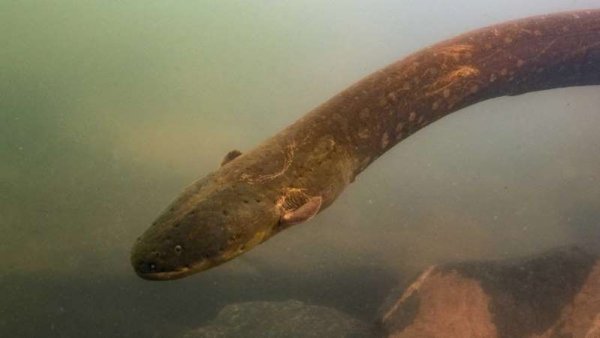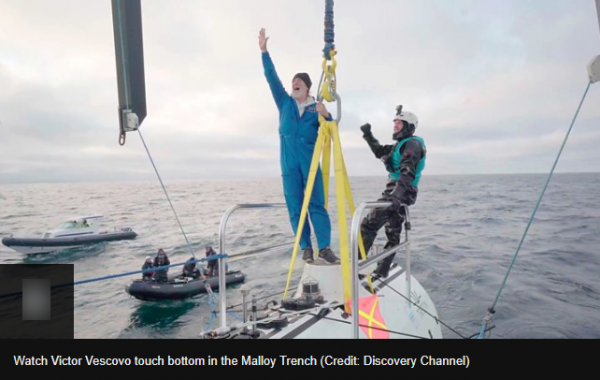-
Posts
20,847 -
Joined
-
Last visited
-
Days Won
49
Everything posted by CaaC (John)
-
Mother Nature creates beauty buddy and some human beings just completely fuck it up like cutting down rain forests in the like of the Amazon just for profit making money to swell their company coffers, funny and horrible old World we live in nowadays.
-
Like I said @SirBalon, that jellyfish changing shape is like looking at star clusters in our galaxy.
-
Bloody amazing that and beautiful, it's like a birds-eye view of Space close up and some of the galaxies in a cluster of colour moving around.
-
Asteroid twice the size of the Shard to pass by Earth © Other Two asteroids are to pass Earth in a day, says Nasa. File pic An asteroid double the size of the Shard will pass by Earth on Saturday night, NASA scientists have said. The space rock, known as Asteroid 2000 QW7, is set to fly by around three million miles from Earth at 14,361mph, according to the US space agency's jet propulsion laboratory. The asteroid is approximately between 300 and 600 metres wide, according to NASA data, but it poses no danger. In comparison, the Shard, the tallest building in the UK, stands at 309.7 metres high. The 2000 QW7 will be the second of two relatively medium-sized asteroids to pass Earth in a day. © Getty The asteroid is twice the size of the Shard. The other asteroid, 2010 CO1, is somewhat smaller, being between 120 and 260 metres, and was due to pass Earth early Saturday morning. "These asteroids have been well observed - one since 2000 and the other since 2010 - and their orbits are very well known," said Lindley Johnson, planetary defence officer at NASA. "Both of these asteroids are passing at about 14 lunar distances from the Earth, or about 3.5 million miles away, but small asteroids pass by Earth this close all the time." The asteroids are being carefully tracked by space experts, with the bigger one expected to pass Earth at around 12.54am on Sunday morning. NASA has been aware of the asteroid since 2000 and is confident that it is not a threat. The asteroid will continue to orbit the sun and is next expected to pass Earth on October 2038. https://www.msn.com/en-gb/news/uknews/asteroid-twice-the-size-of-the-shard-to-pass-by-earth/ar-AAHhLXE?MSCC=1568456986&ocid=chromentp
- 1,657 replies
-
- space exploration
- astronomy
-
(and 1 more)
Tagged with:
-

Manchester United Discussion
CaaC (John) replied to a topic in Premier League - English Football Forum
Just waiting for the official site saying such though but Castles is normally reliable with news like this. -
Just watched with the wife a Golden Oldie, The Diary of Ann Frank 1959 film in b/w, funny in some parts but sad in others, sometimes it made me feel depressed the same as when I have watched it before in how wicked some people could be in the horror treatment of human beings in WWII, I have read the book a couple of times and I did enjoy reading it.
-
'I knew she was in a relationship of sorts with Geoffrey and I knew she wanted to marry him, that was common knowledge but at the time of the incident, she had a lot of financial troubles which he did not know about. 'She owed me a lot of money and I had ended up taking her to court which was not ideal but all I could do. Lawyer Sue Sims-Steward said her former friend and business partner Miss Moore said she slipped and hit her head 'She turned up for the judgment at the Royal Courts in London and I was told by her secretary and by my counsel that she had black eyes and she'd suffered an accident while on holiday. 'What I remember clearly is her ringing me at the time to ask me to back off and give her more time to pay. 'In the course of that conversation, she told me what had happened with Geoffrey. She had been to France with him. They stayed at the Hotel du Cap, they'd had a row over them getting married. 'He said, 'I'm not marrying you', the row took off, she started throwing his things out of the window. She grabbed one of his suits, there was a tussle over it and she slipped and hit her head and that's how the whole thing happened. https://www.dailymail.co.uk/news/article-7456251/Geoffrey-Boycott-NEVER-hit-former-girlfriend-south-France-insists-former-friend.html
-
Has another interstellar visitor been found? An amateur astronomer has discovered a comet that could come from outside our Solar System. If so, it would be the second interstellar object after the elongated body known as 'Oumuamua was identified in 2017. The Minor Planet Center (MPC) at Harvard University has issued a formal announcement of the discovery. The body appears to have a "hyperbolic" orbit, which would appear to indicate its origin in another planetary system. A hyperbolic orbit is an eccentric one, where the shape deviates substantially from that of a perfect circle. A perfect circle has an eccentricity of 0. The elliptical orbits of many planets, asteroids and comets have eccentricities between 0 and 1. The newly discovered object - initially given the designation gb00234, but now known as Comet C/2019 Q4 (Borisov) - has an eccentricity of 3.2, based on current observations. It was noticed by the amateur stargazer Gennady Borisov on 30 August at the Crimean Astrophysical Observatory in Bakhchysarai. At the time, it was about three astronomical units (about 450 million km) from the Sun. Bizarre shape of interstellar asteroid 'Space cigar' had a violent history Oumuamua, discovered on 19 October 2017, was initially classified as a comet, based on its hyperbolic trajectory. But further observations detected no sign of a coma - the fuzzy envelope around the nucleus of a comet. C/2019 Q4 (Borisov), on the other hand, is clearly an active comet, with a visible coma and tail. Unlike the small, faint 'Oumuamua, the new object seems to be very large - around 20km wide - and bright. In addition, 'Oumuamua was also spotted after its closest approach to the Sun (perihelion), so it wasn't visible long enough for astronomers to answer the many questions they had. C/2019 Q4 (Borisov), meanwhile, is still approaching our Solar System and shouldn't reach perihelion until 10 December. The Minor Planet Center announcement called on astronomers to make follow-up observations. According to the MPC, "absent an unexpected fading or disintegration, [C/2019 Q4] should be observable for at least a year". This would give observers an exciting opportunity to characterise the properties of an object that could have originated around a distant star. Astrophysicist Karl Battams, from the Naval Research Laboratory in Washington DC, tweeted: "Unlike 'Oumuamua, whose asteroid-or-comet nature still gets debated, this one is definitely a comet. "If it is unequivocally interstellar, it'll be fascinating to see how its composition (spectral properties) compares to the variety we see in comets from our own Solar System." Astrophysicist Simon Porter, from the Southwest Research Institute (SwRI) in San Antonio, Texas, who has been tracking the object, added on Twitter: "With such a bright coma, we should be able to get beautiful spectra of Q4 and hopefully measure isotopic ratios." Isotopes are different forms of the same chemical element. He added that these ratios could be different from those of "domestic" comets. NASA REPORT https://www.bbc.co.uk/news/science-environment-49676757
- 1,657 replies
-
- space exploration
- astronomy
-
(and 1 more)
Tagged with:
-
Dolphins exposed to 'cocktail of pollutants' in the English Channel Dolphins living in the English Channel are exposed to a "cocktail of pollutants", say scientists. A study found some of the highest recorded levels of toxic chemicals and mercury in the bodies of bottlenose dolphins off the French coast. Researchers say more needs to be done to tackle the "invisible" problem of lingering pollutants in the oceans. The Channel is home to one of the last remaining large European populations of bottlenose dolphins. Stranded whales: Numbers on the rise around the UK Dire outlook for many killer whales Dozens of dead whales found beached in Iceland. Researchers took tissue samples from more than 80 dolphins living in waters off Normandy and Brittany. They found high concentrations of mercury in the skin and polychlorinated biphenyls, or PCBs, in blubber. Other industrial chemicals, such as dioxins and pesticides, were also found in blubber samples, which together may act as a "cocktail of pollutants", they said. The chemicals are passed down from mother to calf. "Our results indicated the important transfer of PCBs by females to their young, which may raise concern for the population," said the team of researchers led by Dr Krishna Das of the University of Liege, Belgium. The scientists say the bottlenose dolphin's habitat - an area known as the Normanno-Breton Gulf - should become a special area of conservation to protect the population. The study, published in the journal Scientific Reports, chimes with data from investigations of strandings, said ZSL's Rob Deaville, of the UK Cetacean Strandings Investigation Programme. "As apex predators, bottlenose dolphins are at higher risk of exposure to some of the chemicals mentioned in this study - and as many of the European coastal populations of bottlenose dolphins are relatively small in size, they may, therefore, be under greater conservation threat," he said. PCBs, used in plastics, paints and electrical equipment, were banned several decades ago, but persist in the environment, where they can build up in the blubber of dolphins and whales. The chemicals have been found in the blubber of bottlenose dolphins washed up on beaches around Europe. One killer whale found dead off Scotland in 2016 contained among the highest levels of polychlorinated biphenyls, or PCBs, ever recorded. 'Shocking' pollutant levels in UK whale. https://www.bbc.co.uk/news/science-environment-49675283
-
Joe Willock signs long-term Arsenal contract Arsenal midfielder Joe Willock has signed a new long-term contract with the Premier League club. The England Under-21 international has been at the club since he was four. Willock, who made his debut on September 2017 in a League Cup game against Doncaster, started Arsenal's first three Premier League games this season. "It is only right in my heart and my mind to continue my career here," the 20-year-old Arsenal.com. He added: "The manager has put a lot of faith in not just me but a load of youngsters so far this season - every day in training he is encouraging to us."
-
Grandson off school not feeling well so we have his company while out daughter is at work, he has teeth missing just like me
-
Adria, the world's lost continent: Greenland-sized landmass smashed into Europe 100million years ago but was then obliterated Geologists have revealed the history of a lost continent in painstaking detail for the first time. Greater Adria would have been about the size of Greenland and attached to what are now France, Spain and Africa. In a 427-page long record of 240million years of world history, researchers have detailed how the continent essentially crumbled into what is now Europe. The paper is the most detailed reconstruction of how the Earth's landmasses could have looked a quarter of a billion years ago. And Greater Adria, which could have stretched from the Alps to Iran, may have been the driving force behind the formation of mountains throughout Italy, Turkey, Greece and south-eastern Europe. FULL REPORT
-
Water found on 'mind-blowing' planet around a distant star Astronomers have discovered water in the atmosphere of a planet orbiting within the habitable zone of a distant star. The finding makes the world - which is called K2-18b - a plausible candidate in the search for alien life. Within 10 years, new space telescopes might be able to determine whether K2-18b's atmosphere contains gases that could be produced by living organisms. Details are have been published in the scientific journal Nature Astronomy. The lead scientist, Prof Giovanna Tinetti of University College London (UCL) described the discovery as "mind-blowing". "This is the first time that we have detected water on a planet in the habitable zone around a star where the temperature is potentially compatible with the presence of life," she said. The team looked through the planets discovered by the Hubble Space Telescope between 2016 and 2017. The researchers determined some of the chemicals in their atmosphere by studying the changes to the starlight as the planets orbited their suns. The light filtered through the planets' atmospheres was subtly altered by the composition of the atmosphere. Only K2-18b revealed the molecular signature of water, which is a vital ingredient for life on Earth. Computer modelling of the data suggested that up to 50% of its atmosphere could be water. The new planet is just over twice the size of Earth and has a temperature cool enough to have liquid water, between zero and 40C. Dr Angelos Tsiaras, a member of the UCL team, said that finding water in the atmosphere of a potentially habitable exoplanet was "incredibly exciting". He said: "It brings us closer to answering the fundamental question: Is the Earth unique?" K2-18b may be able to support life. But we have no way to tell at the moment. What is an exoplanet? Planets beyond our Solar System are called exoplanets The first exoplanet was discovered in 1992, orbiting a pulsar (a neutron star that emits electromagnetic radiation) More than 4,000 have been detected to date using several techniques Many of these worlds are large planets believed to resemble Jupiter or Neptune Many giant planets have been found orbiting very close to their stars It is 111 light-years away which is around 650 million million miles, too far to send a probe. So the only option is to wait for the next generation of space telescopes to be launched in the 2020s and look for gasses in K2-18b's atmosphere that could only be produced by living organisms, according to UCL's Dr Ingo Waldmann. "This is one of the biggest questions in science and we have always wondered if we are alone in the Universe. Within the next 10 years, we will know whether there are chemicals that are due to life in those atmospheres." Long haul One difficulty with this approach, though, is that astronomers can't agree on which gases would constitute evidence of life. That might be more of a longer haul. It is likely to require a survey of the chemical composition of, perhaps, hundreds of worlds and an understanding of how they are created and evolve, according to Prof Tinetti. "The Earth really stands out in our own Solar System. It has oxygen, water and ozone. But if we find all that around a planet around a distant star we have to be cautious about saying that it supports life," she said. "This is why we need to understand not just a handful of planets in the galaxy but hundreds of them. And what we hope is that the habitable planets will stand out, that we will see a big difference between the planets that are habitable and the ones that are not." Dr Beth Biller at Edinburgh University's Institute of Astronomy said she believed that evidence of life on a planet around a distant star would eventually be discovered. "That would be a paradigm shift for all of humanity," she told BBC News. "It's not going to be ET phoning home, necessarily - more likely microbes or some other simple life. Even so (when it happens) it's going to be huge". The prospective launch of Nasa's much delayed James Webb Space Telescope (JWST) in 2021, and the European Space Agency's Ariel mission seven years later will enable astronomers to study in detail the atmospheres of the varied worlds that have been detected so far. Water has been detected on other planets but they have been either too big or too hot to support life. Cooler smaller planets are much harder to detect. The team at UCL was able to do this by developing algorithms capable of teasing out the chemical composition of the atmospheres of potentially habitable worlds K2-18b was discovered in 2015 and is one of the hundreds of super-Earths - planets with a mass between Earth and Neptune - found by Nasa's Kepler spacecraft. Nasa's Tess mission is expected to detect hundreds more in coming years. The research was funded by the European Research Council and the UK Science and Technology Facilities Council, which is part of the UK Research and Innovation agency (UKRI). https://www.bbc.co.uk/news/science-environment-49648746
- 1,657 replies
-
- space exploration
- astronomy
-
(and 1 more)
Tagged with:
-
Cryodrakon Boreas: Enormous, Dinosaur-eating Reptile Is One of the Biggest Flying Creatures Ever Discovered An enormous reptile discovered in Alberta, Canada, is one of the biggest flying creatures ever discovered, with a wingspan of up to 32 feet—roughly double the height of an average giraffe. The species, which has been named Cryodrakon boreas, lived about 77 million years ago and may well have fed on small animals such as lizards and baby dinosaurs. The fossilized remains were first found over 30 years ago but previously assigned to a different flying species of pterosaur—Quetzalcoatlus. This was another giant flying reptile, which weighed up to 550 lbs and had a wingspan of up to 34 feet. Over the last three decades, as more ancient remains were uncovered, researchers realized there were key differences between the two species. In a study published in the Journal of Vertebrate Paleontology, researchers have now named and described the new species. Both Quetzalcoatlus and Cryodrakon are types of azhdarchid—a family of pterosaurs that lived during the late Cretaceous Period. These creatures had long necks and stork-like bills. While most species were extremely large, researchers have recently identified a cat-sized azhdarchid. In the latest study, David Hone, from the Queen Mary University of London, and colleagues showed how the neck bones in the newly identified species are shorter and wider than in Quetzalcoatlus, while Cryodrakon has a thinner humerus. "Really as soon as I started looking in detail it was clear there were some differences between the two," he told Newsweek. "I think a fair number of researchers have suspected as much for a while, but sitting down to do the work and getting into the details takes time." The team said that Cryodrakon and Quetzalcoatlus were probably of a similar size and build, with a similar flight performance and muscles. Combined with the somewhat greater length of the humerus in Cryodrakon, it is likely that Cryodrakon was slightly heavier than Quetzalcoatlus, but their overall mass was likely similar. Azhdarchids were found across the globe, with species identified on almost every continent. Despite probably being able to cross oceans, azhdarchids tended to stay around the land. They are believed to have been predators and, because of their limited mouth size—with the beak being very long and thin—it is thought they tended to eat small prey. Cryodrakon was mainly identified from the fossil of a juvenile and scientists used this to estimate its size as an adult. Potentially, Hone said, there could have been larger individuals, but finding evidence of this is unlikely. "Finding any bone is good, finding a good one of a giant animal is going to be unlikely," he said. "The biggest azhdarchids may have pushed the limit [of] how big a flying animal you can have but Cryodrakon, while probably not the largest—based on what we have—is certainly in the mix of these giant animals." https://www.msn.com/en-gb/news/offbeat/cryodrakon-boreas-enormous-dinosaur-eating-reptile-is-one-of-the-biggest-flying-creatures-ever-discovered/ar-AAH5s8A
-
Newly discovered species of electric eel can produce the most powerful electric shock of any animal VIDEO It's an update to the electric eel family tree that's been over 250 years in the making. The electric eel was first described by the famed Swedish scientist Carl Linnaeus in 1766. But after years of hanging out on its own as the only species in the genus Electrophorus, researchers have now discovered that the electric eel, Electrophorus electricus, is in fact not one species but three. What's more, one of the newly described species of eel, Electrophorus voltai, has been recorded generating an electric shock of 860 volts. It's far above the 650V previously recorded for the electric eel, making E.voltai the most powerful electricity-generating animal in the world, the authors report in Nature Communications today. FULL REPORT
-
Star was hurled across our Milky Way galaxy by new, unseen kind of black hole Illustration of a planet being consumed by a black hole. As the planet approaches the collapsed star, tidal forces rip it to pieces, because of the much greater gravitational pull on the side of the planet nearest to the black hole. A star which was hurled across our galaxy at enormous speed was probably ejected from its birth galaxy by a sort of black hole never before seen in our galaxy. Researchers from the Keck telescope believe that the star, PG 1610+062 was hurled across the galaxy by a mid-mass black hole (MMBH). Keck Observatory data revealed that PG1610+062 is actually a surprisingly young, massive star that’s ten times more massive, ejected from the Galactic disk almost at the escape velocity from the Milky Way. Researchers now believe there is only one likely culprit - a mid-mass black hole. Such objects have been predicted to exist in young stellar clusters in the spiral arms of the Milky Way, but none has been detected yet. 'Now, PG1610+062 may provide evidence that MMBHs could indeed exist in our galaxy. says lead author Andreas Irrgang of the Friedrich-Alexander University of Erlangen-Nuremberg in Germany. The race is on to actually find them.’ The team needed spectral data of the star, but its distance and position in the sky made W. M. Keck Observatory’s Echellette Spectrograph and Imager (ESI) the only tool for the job. In the northern hemisphere, only the combination of Keck Observatory and ESI gave us what we needed. The collecting area of Keck allowed us to gather enough photons for our object and ESI has exactly the right resolution, which is high enough to resolve all the spectral features. https://www.msn.com/en-gb/news/techandscience/star-was-hurled-across-our-milky-way-galaxy-by-new-unseen-kind-of-black-hole/ar-AAH64BU?li=BBoPWjQ
- 1,657 replies
-
- space exploration
- astronomy
-
(and 1 more)
Tagged with:
-
China’s biggest telescope detects 100 mysterious signals from three billion light-years away China’s largest telescope has been picking up more than 100 mysterious signals coming from a source around three billion light-years away from Earth. These strange signals are known as Fast Radio Bursts (FRBs) – pulses of radio waves coming from unknown cosmos in space. Officials say that the telescope, situated in Guizhou, has detected over 100 FRBs and the source is designated FRB121102 – three billion light-years away. FULL REPORT
- 1,657 replies
-
- space exploration
- astronomy
-
(and 1 more)
Tagged with:
-
Archaeologists claim 2,200-year-old ruins in Israel could be the remains of the biblical town Emmaus where Jesus travelled after his resurrection Archaeologists in Israel have claimed to have discovered the true location of the biblical town of Emmaus, where Jesus first appeared to two followers after being crucified and resurrected. The remains of a 2,200-year-old fortification at Kiriath-Jearim, a hill on the outskirts of Abu Ghosh, a village near Jerusalem have been uncovered by researchers. The massive walls of the Hellenistic fortification are believed to have been built by the Seleucid general who defeated Judah the Maccabee, the Jewish leader spoken of in the Hanukkah story. © Provided by Associated Newspapers Limited Emmaus is significant in Christianity as Jesus appeared to two of his apostles on the road to the town after his crucifixion and resurrection Tel Aviv University professor Israel Finkelstein, who leads the archaeologist project with Thomas Romer and Christophe Nicolle of the College de France, now claims that the hill and village should be identified as Emmaus. In Christianity, Emmaus is significant as Jesus appeared to two of his apostles on the road to the town after his crucifixion and resurrection. In Luke 24:13-35, the town is described as being fortified and about seven miles west of Jerusalem. This matches the location of Kiriath-Jearim, Abu Ghosh and Jerusalem, as well as the distance between them. However, Benjamin Isaac, emeritus professor of ancient history from Tel Aviv University, warned that there are at least two other sites nearby which also have strong claims to be Emmaus. He said: 'Finkelstein and Römer have a good case archaeologically, geographically, and topographically. FULL REPORT
-
Victor Vescovo: Adventurer reaches deepest ocean locations VIDEO US adventurer Victor Vescovo has become the first person to visit the deepest points in every ocean. His fifth and final dive in a prototype submersible was made to the bottom of the Arctic's Molloy Trench, some 5.5km (3.4 miles) below the sea surface. This followed dives during the past 10 months to the floor of the Pacific, Indian, Southern and Atlantic oceans. The millionaire financier's team also visited the wreck of the Titanic. All Mr Vescovo's dives were made using the 12-tonne Deep Sea Vehicle (DSV) Limiting Factor, launched and recovered from a dedicated support ship, the DSSV Pressure Drop, ironically a one-time navy submarine hunter. Deepest-ever sub dive finds plastic waste Robot duo wins ocean-mapping XPRIZE The last leg of the "Five Deeps Expedition" was concluded on 24 August when the explorer reached a spot known as the Molloy Hole, which is about 275km (170 miles) west of Norway's Svalbard archipelago. The recorded depth on the solo dive was 5,550m, plus or minus 14m. It is the first time any human has been to this location. FULL REPORT
-
Might have read that ages ago but as I said I only treat Cricket as a sport and then you could say the same as Stan Collymore playing football in his days yet he beat up Ulrika Jonsson, I only treat football as a sport, I am not for the beating up of women anytime, bloody hell, if I tried beating the wife up she would kick the shite out of me then her big sis would come around and finish the job off. It's all the drug-related bits I am on about years ago with all the media and government condemning drugs and yet the likes of Jagger going around sniffing, popping and smoking whatever years back and they were condemned then but now they are good old men and made Sir's, and pound to a penny about they still do the naughty drug bit nowadays behind closed doors...it's a funny old world we live in. P.S. I bet Prince Charles has had a sly puff of the funny stuff in his time in the Royal Loo.
-
Aye the FA make you laugh sometimes, it's like the BBC saying they never advertise and that's why we have to pay for a TV Licence yet on the likes of Match of the Day with all their advertisements plastered around the ground and as you said players wearing shirts with brand names on them.
-
Tell me more please, I just look at cricket as a sport and I don't read everything that is shown in the media.
-
Everton defender Yerry Mina fined for breaching betting rules Everton's Colombia defender Yerry Mina has been fined £10,000 and warned over his future conduct after breaching Football Association betting rules. An FA regulatory commission said Mina took part in a television advert with a Colombian betting company called Betjuego, and accepted the misconduct charge. The commission heard that the advert was entirely in Spanish and not broadcast outside of Colombia. Everton said, in mitigation, that the advert had only aired for around one month after 24-year-old Mina had demanded it be removed as soon as he was informed that he was in breach of the FA's betting rules. A statement released by the FA said: "Yerry Mina has been warned as to his future conduct and fined £10,000 after admitting a misconduct charge in relation to the FA's betting rules. "The Everton FC defender breached FA Rule E8(3) by participating in an advertisement for betting activity which he is prohibited from engaging in." Mina joined Everton from Barcelona in a deal worth around £27million after starring for Colombia at the 2018 World Cup in Russia and has since made 19 appearances for the club https://www.sportsmole.co.uk/off-the-pitch/everton/news/everton-defender-yerry-mina-fined-for-breaching-betting-rules_370979.html
-
I see Geoff Boycott got knighted and there is a lot of backlash about him being made a Sir but as he said he 'doesn't give a toss' about knighthood criticism, in a way he is right, he played Cricket as a profession over the years where a lot of young kids growing up watched him play and learnt from him. When you see people like Sir Paul McCartney, Sir Mick Jagger receiving knighthood's fuck all is mentioned all the drugs they experienced with and young kids getting influenced in copying them in their drug relates antics, I would rather see a young kid growing up playing Cricket as a sport than a young kid growing up blowing his/her mind out with LSD etc. https://www.bbc.co.uk/news/uk-49639222
-
An Entire Scientific Observatory at The Bottom of The Ocean Mysteriously Vanished "The devices were gone, the divers could not find them anymore," said marine biogeochemist Hermann Bange of the GEOMAR Helmholtz Centre for Ocean Research in Kiel. "When the divers reached the bottom of the sea last week at the observatory's location, they found only the torn-off land cable. It was completely shredded." Because of the size and mass of the thing, it's unlikely, German officials say, that it was removed by storms, currents, or marine animals. The station, installed by the government-funded Kiel Ocean Research Centre and the Helmholtz Centre Geesthacht, consisted of two parts in a rack. There was the power supply, connected to land by the cable, and the observatory itself, containing sensors to monitor temperature, salinity, oxygen, currents and methane concentrations. The observatory was positioned about 1.8 km (1.2 miles) offshore, north of Kiel in northern Germany. The place was a carefully selected restricted zone, and off-limits to boats – but it's possible nonetheless that someone was able to enter the area without detection and retrieve the €300,000 (about AUD$442,000) observatory from its seafloor depth of 22 metres (72 feet). As for why it's possible that it was stolen for metal. Apparently seafloor salvage - especially from sunken pre-nuclear military vessels - is tremendously lucrative, and thieves have become adept at plundering entire ships without anyone noticing. Although the observatory was only installed in 2016, thieves may have seen an opportunity and pounced. But it's not just the metal that has gone missing. The GEOMAR scientists are mourning the loss of their precious data. It's possible that another observatory could be built, but in the meantime, there is nothing monitoring that section of the sea for the first time since 1957. This not only means there's going to be a gap in the data, but if something important happens in the undersea environment, we now have no surefire means of detecting or observing it. "The data that we collect is downright priceless," Bange said. "They help research to register changes in the Baltic Sea and possibly take countermeasures." The police are investigating the theft, but the team also hopes that publicising the loss will produce some leads. "We would be very happy about the hints," Bange said. "Maybe someone saw something on the morning of 21 August at the Sperrgebiet 'Hausgarten' near the Hökholz campsite. Or someone finds parts of the frames somewhere on the beach." They are also planning to try and get the station operational again as fast as possible. https://www.msn.com/en-gb/news/offbeat/an-entire-scientific-observatory-at-the-bottom-of-the-ocean-mysteriously-vanished/ar-AAH1r6G






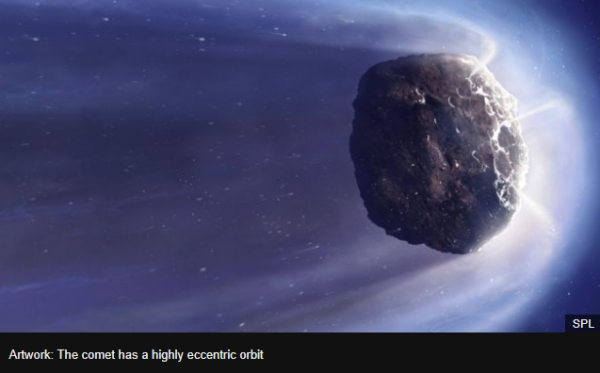

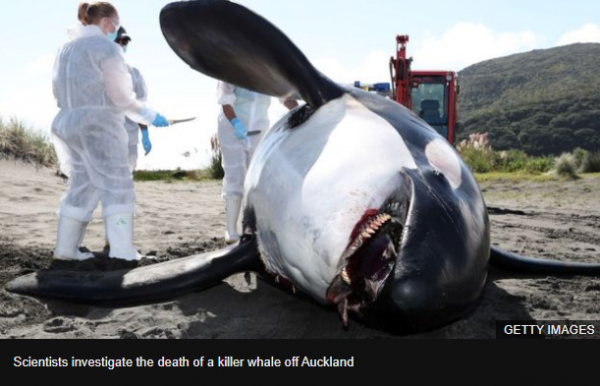





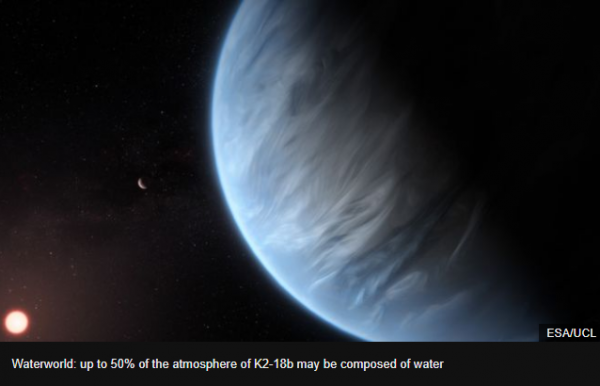
.thumb.png.13ab94af95aea3d6ad3019a1dfd40dd7.png)


